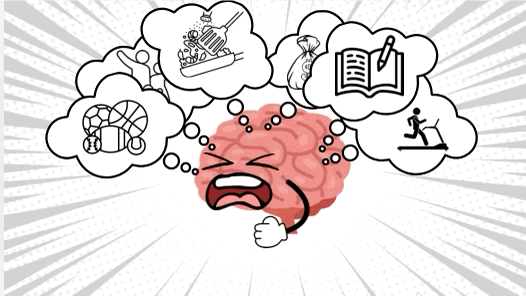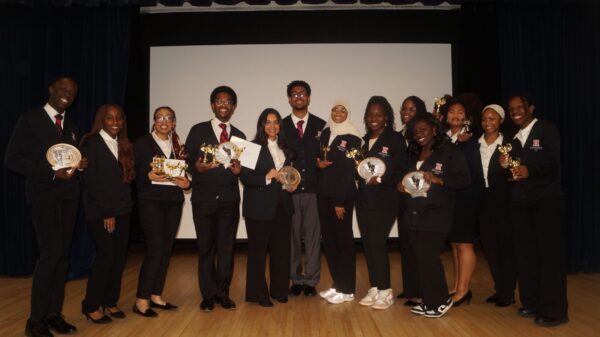
Living in today’s fast-paced and hyper-connected world, multitasking is often hailed as a vital skill. From responding to emails during meetings to checking our phones while watching TV, it is easy to feel like we are conquering multiple tasks at once.
However, the question remains: Are we really getting more done?
According to psychological research, the answer is a resounding no. In fact, multitasking may be doing more harm than good, impairing our performance and well-being.
Despite popular belief that we can handle several tasks at once, the brain can not function properly this way. What we often call “multitasking” is actually task-switching—rapidly shifting our attention from one task to another.
The American Psychology Association notes how individuals are slower to perform when switching between tasks, even when the switch is predictable and occurs every two or four trials, compared to when they repeat the same task.
Researchers also found that giving more preparation time between trials reduced but did not eliminate, the switching cost. A “switch cost” refers to the amount of time the brain requires to shift focus from one task to another and re-engage with the new activity.
This suggests that the switching cost consists of two components: one related to the time required to adjust mental control settings, which can be done in advance given sufficient time, and another due to competition from lingering control settings of the previous trial, which seems resistant to preparation.
According to the association, task-switching costs may be small, “sometimes just tenths of a second per switch,” but can add up when switching repeatedly. Multitasking may seem efficient but often takes more time and can lead to more errors. Meyer noted that even brief mental blocks from task-shifting can reduce productivity by up to 40 percent.
An article by Harvard Business Review explored how variety influences happiness. The publication found that “people value feeling productive in how they spend their time.” While participants often expected that switching between multiple tasks would make them happier, the researchers found that “more varied activities actually made people less happy” over short time periods.
This is because frequent task-switching drains cognitive resources and limits a sense of progress, reducing overall happiness.
Ioannis Pavlidis, director of the Computational Physiology Laboratory at the University of Houston, articulated the following in her study, “Individuals who engaged in multitasking appeared significantly sadder than those who did not.”
Pavlidis added, “constant interruptions can actually create sadness and fear and eventually, a tense working environment.” The simultaneous fear likely stems from anticipating the next task disruption. Since multitasking is common, these negative emotions can last throughout the workday.
Since multitasking is so common, these negative emotions can linger throughout the workday for many individuals. Pavilidis stressed that it is this widespread, ongoing, and persistent nature of the issue that makes it such a dangerous “climate maker.”
Moreover, multitasking can diminish our ability to be fully present in the moment. In the long run, this habit of constant distraction can lead to burnout and fatigue, both mentally and emotionally.
So, why do we continue to believe in the myth of multitasking? Part of the answer lies in societal and cultural values. In many societies, productivity is equated with success, and the ability to juggle tasks is praised. We wear our busyness as a badge of honor, convincing ourselves that multitasking is the key to keeping up in a demanding world.
So, what is the alternative? Enter the concept of “single-tasking.” This approach encourages us to devote our full attention to one task at a time, engaging deeply with it before moving on to the next. By focusing on one task, we allow our brains to function more efficiently, improving both speed and accuracy.
American work management company, Asana, proposes the following tips to embrace single-tasking. To start embracing single-tasking, try these simple strategies:
- Timeboxing
Timeboxing is a goal-oriented method where you allocate a set time for each task and work without distractions until the time is up. - Schedule Time Blocks
Time blocking involves grouping similar tasks together and completing them in dedicated time slots. It reduces distractions and helps maintain focus. Instead of keeping your inbox open all day, schedule specific blocks of time for checking emails. This method helps prevent constant interruptions from notifications. - Use Do Not Disturb Features
Even without structured time management, turning on do not disturb mode on your computer and phone can help eliminate distractions. This allows you to focus on your work and get into a productive flow. - The Pomodoro Technique
The Pomodoro Technique involves working in 25-minute intervals (pomodoros), followed by 5-minute breaks. After four pomodoros, take a longer break. This method helps maintain focus during work sprints while still giving you regular breaks to recharge. - Align on Priorities
When multitasking seems tempting, understanding the importance of each task helps you resist. Prioritize tasks based on their relative impact, focusing on the most important ones first. - Set MITs (Most Important Tasks)
Identify your top-priority tasks each day (MITs) and focus on completing them. This approach can reduce procrastination and burnout.
As tempting as multitasking may seem, psychological evidence is clear: trying to do everything at once is neither effective nor sustainable. By understanding the cognitive and emotional costs of task-switching, we can begin shifting toward more mindful, focused ways of working. In a world that constantly demands both individual focus and general attention, choosing to focus on one task at a time may be the ultimate productivity hack.
Copy edited by Anijah Franklin





























